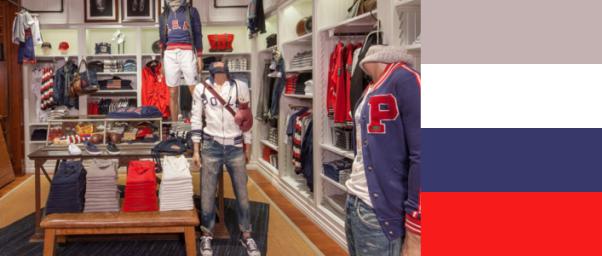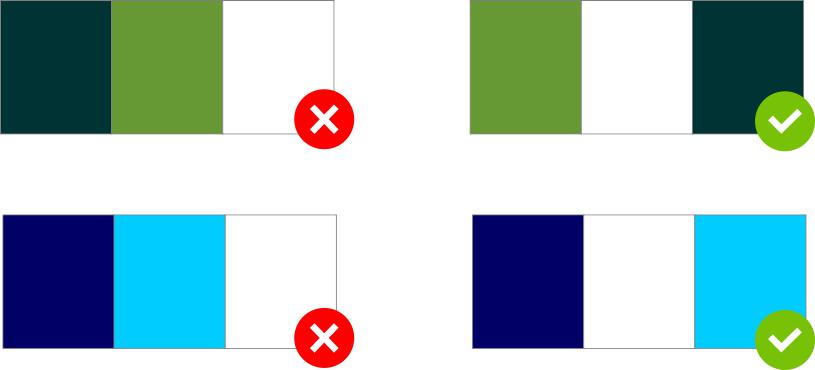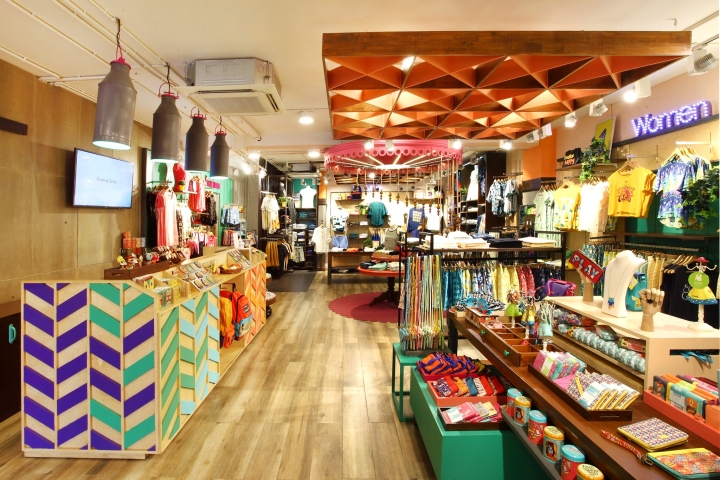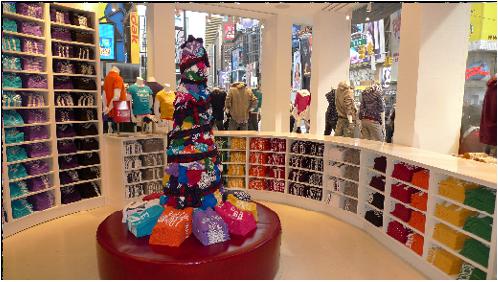As you can imagine, the best way to display your products in the store (arrange a clothing store) is not to put them at random. There has to be a way to choose which products go, for example, to that display at the entrance, and those that go to the island. And in fact, there are better ways than displaying randomly.
The way you arrange a clothing store through the store must to take into account two important aspects:
- Aesthetics. The customer when looking at the entire store and seeing all the products have to feel a strong desire to buy. That feeling of “I have to own one of these clothes”
- Functionality. It must be easy for the customer to find the product he is seeking, and also the sorting of products should make her buy more than she was initially thinking. That idea of “I have to buy that skirt too because it looks good with this shirt.”
Let’s see how we can distribute the store’s merchandise, according to several criteria.
By family
Displaying by family (or sub-family) means that all products belonging to this family will be together. For example, putting together all the pants in the same display, or put all the dresses on the same area of store.
This way of sorting can be useful if your store is making a special promotion for a particular family of products.
This is a system that has both advantages and disadvantages.
Advantages:
- Aesthetically, if well displayed, it can be very appealing.
- Easier to restock shelves and racks.
- It’s easy for a customer who is looking for a very specific type of product. This is the biggest advantage for a customer who, for example, “needs to buy a new dress”
Disadvantages
- Doesn’t help complementary purchases. For example, if ties are not close to shirts, you will lose that impulse sale. And we know that ties are one of the few products that men buy on impulse.
- It creates areas with a lot of traffic and others with little traffic. As the demand for products is not all the same, there will be areas of the store that will have many visits and others that don’t.
Example of how to arrange a clothing store by family (category). T-shirts are all together.

By color
Displaying by color doesn’t mean that all clothes of the same color are together (although they may be), but it usually means that in a particular display or area of the store, only certain combinations of colors are there.
Most products in a store have neutral colors (black, white, gray), or almost-neutral (beige, dark blue, dark brown). But then, there may be other stronger colors (light blue, green, red, yellow, etc).
Any strong color goes well with a neutral color and with most almost-neutral colors. But strong colors can be difficult to combine. Therefore, it’s very common for stores that use color sorting display to create areas in the store where there is only one particular strong color with neutral or almost-neutral colors.
You can also create areas with neutral colors only. Of course, it may be possible to combine two or even three strong colors, but it is more difficult.
Here are some examples of how to choose colors to arrange a clothing store.



Tip#1: Search Google images for the following words: “Colors combinations for clothes”. There you will find many good color combinations.
Tip#2: Sometimes matching the same colors but with different tones can be tricky. This problem happens a lot in green tones. But if you put a neutral color between these two tones, the aesthetic problem disappears.

The use of color when sorting products is widely used in medium and big stores.
Advantages:
- Aesthetically appealing.
- Supports sales of complementary products.
Disadvantages
-
Color matching is not easy. It requires a lot of practice, and a lot of testing until you get a good balance. Also because many products have not only one color, but several, such as stripes, chess, prints, etc.
By price
Although not widely used, the truth is that in certain situations, its use can be important to increase sales and make the store’s operation easier.
When the store is in strong price reductions, having the store separate by price, is very appealing to customers who are looking for big bargains.
For example, putting the store with three prices only, causes customers to be tempted to spend some available money.
Advantages:
-
For the customer who wants to buy by price, it’s easier to find the right product.
Disadvantages:
- It limits the variety of prices.
- The store looks unattractive.
By use
Sorting clothes by use, is widely used by boutiques. Sorting by use, is sorting by the use that the customers will give, or by what occasion.
For example, sorting clothes for customers who:
- Play sports
- Are going out at night or partying
- Going to work (formal clothes)
- Wear day to day (casual clothes)
- Go adventure.
- Go to the beach or vacations
- etc.
Advantages:
- It allows the customer to identify with the area of the store that interests him.
- It allows to make displays using accessories of decoration adapted to the use. For example, creating a beach decoration inside the store.
Disadvantages
-
Not all clothes are easy to catalog by type of use. For example, a lot of work clothes can also be casual.
By gender / age
This is a distinction that all stores make.
Men’s clothing is separated from women’s clothing, and boy’s clothing is separate from girl’s clothing.
By size
Although not widely used, there are cases where it’s very useful.
If your store has many products where there are not all sizes available, because they were already sold, or because you did not buy them, then size separation is useful.
It’s one of the situations that most frustrates a client.
A customer sees a sweater she likes and starts looking for her size. Can’t find it. Then she sees another blouse and tries to find her size. She can’t find it either. Then she sees some pants she likes. Tries to find the size and don’t find. The client ends up giving up and leaving, frustrated and with a bad image of the store. And yet, there were in the store several products of the correct size for the customer, and she might have liked some.
This is a situation that occurs a lot at the end of the sales season. There aren’t many sizes available for each product. And so if you separate the products by size, this makes it easier to choose from.
But this is not the only case where size separation is useful. In stores that sell designer clothing, often the pieces are unique or almost unique, they only exist in one or a few sizes. And because of this, size sorting is also useful.
Advantages:
- It makes easier the choice for customers. Especially those who don’t wear the most common sizes.
- If applied at the end of the sales, it allows you to see which sizes haven’t been sold and to correct the purchases for the following seasons.
Disadvantages:
-
The store becomes unappealing in aesthetic terms. Because there’s a mix of colors and patterns that don’t match with each other.
The choice of sorting (arrange a clothing store)
As we’ve seen, there are many ways to sort clothing, but they all have advantages and disadvantages. So how do you decide the best way to sort the clothes for your store?
First, you have to understand that the best sorting for store may not be the same throughout the year. You don’t need to stick to a particular type of sorting.
Secondly, there isn’t only one sorting. All these sortings may be working in sequence.
For example, in a large store that sells for all types of customers (sex, age), the most frequent sorting is as follows:
1. By gender and age. Man / Woman / Boy / Girl / baby boy / baby girl.
2. By use. By use sorting is usually only done in the men and women section.
3. By color.
4. Sometimes it is also done by family.
But in a smaller store, it’s very difficult to do 3 or 4 sortings. The ideal is two.
For a store smaller than 50 m2, (540 ft2) this is the best order:
- For a store that sells for men, women and children: 1st Gender / 2nd Use. Or alternatively, if your clothes don’t have several uses: 1st Gender / 2nd color.
- For a store that sells only for a gender (or age), such as a men’s clothing store, the ideal separation is as follows: 1st use / 2nd color.
Tip: If your store is specialized in a particular product, or family of product, then you should create an area of the store that only has this product. But some of these products may also appear in other sections, because you want to make sales of complementary products. For example, if your store is specialized in t-shirts (but also sells other products), you should have a section of the store with all the t-shirts, but then some of those t-shirts should be mixed with other clothes.
This article is part of our Course “Create an amazing image for your clothing store”


